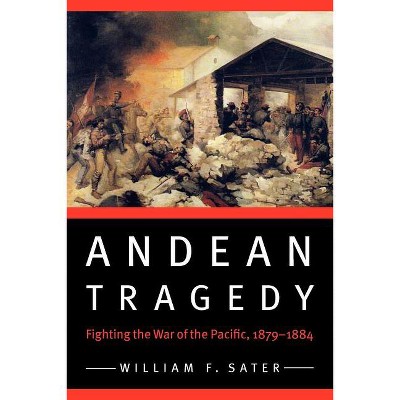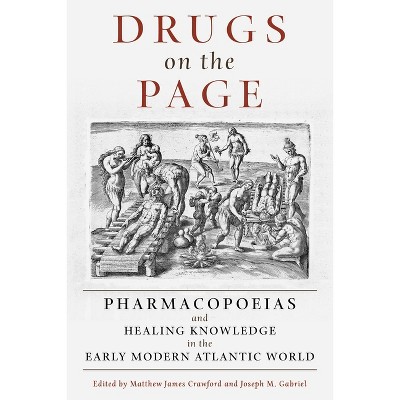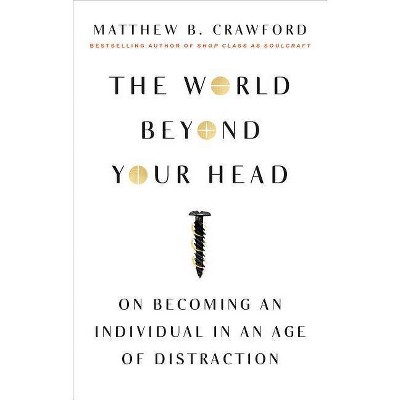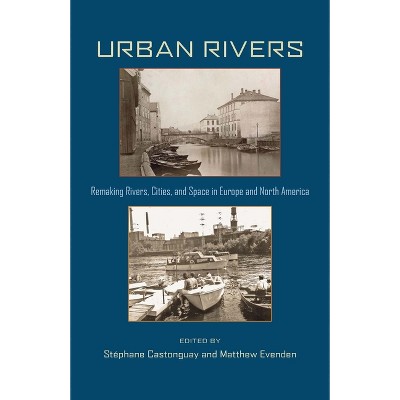The Andean Wonder Drug - by Matthew James Crawford (Hardcover)

$60.00 when purchased online
Target Online store #3991
About this item
Highlights
- In the eighteenth century, malaria was a prevalent and deadly disease, and the only effective treatment was found in the Andean forests of Spanish America: a medicinal bark harvested from cinchona trees that would later give rise to the antimalarial drug quinine.
- About the Author: Matthew James Crawford is associate professor in the Department of History at Kent State University and author of The Andean Wonder Drug: Cinchona Bark and Imperial Science in the Spanish Atlantic, 1630-1800.
- 336 Pages
- Science, History
Description
About the Book
In the eighteenth century, malaria was a prevalent and deadly disease, and the only effective treatment was found in the Andean forests of Spanish America: a medicinal bark harvested from cinchona trees that would later give rise to the antimalarial drug quinine. The Andean Wonder Drug uses the story of cinchona bark to demonstrate how the imperial politics of knowledge in the Spanish Atlantic ultimately undermined efforts to transform European science into a tool of empire.Book Synopsis
In the eighteenth century, malaria was a prevalent and deadly disease, and the only effective treatment was found in the Andean forests of Spanish America: a medicinal bark harvested from cinchona trees that would later give rise to the antimalarial drug quinine. In 1751, the Spanish Crown asserted control over the production and distribution of this medicament by establishing a royal reserve of "fever trees" in Quito. Through this pilot project, the Crown pursued a new vision of imperialism informed by science and invigorated through commerce. But ultimately this project failed, much like the broader imperial reforms that it represented. Drawing on extensive archival research, Matthew Crawford explains why, showing how indigenous healers, laborers, merchants, colonial officials, and creole elites contested European science and thwarted imperial reform by asserting their authority to speak for the natural world. The Andean Wonder Drug uses the story of cinchona bark to demonstrate how the imperial politics of knowledge in the Spanish Atlantic ultimately undermined efforts to transform European science into a tool of empire.Review Quotes
. . . this is a remarkable first book by a young teacher-scholar with impressive expository skills and a mature critical arsenal.-- "Chasqui"
The Andean Wonder Drug is a deft, solidly documented monograph, and anyone with an interest in Iberian "economy botany" is well advised to read it.-- "Bulletin of the History of Medicine"
The Andean Wonder Drug is an illuminating study of the Spanish Empire's efforts to secure monopoly control over the cinchona tree and its bark. The project ultimately failed, but Crawford's deft analysis offers fresh perspectives into the intimate relationship between early modern sciences and empires, local and global knowledge, and the agents involved in the production of knowledge about quina within the early modern Spanish Atlantic World. At its core, this meticulous analysis is a studied reflection on the question of 'who speaks for nature?'-- "Susan Deans-Smith, University of Texas at Austin"
Boldly challenges historiographical consensus. Crawford offers a sweeping counternarrative to any simplified account of the rise of scientific modernity as a tool of empire . . . Crawford's illuminating analysis shows that science and knowledge never worked as an outside, adjudicating arbiter.-- "History of Science"
Crawford is able to weave together a richly detailed and compelling narrative about the politics of natural knowledge in the Spanish Atlantic World, one in which European metropolitan science does not emerge as a privileged way of knowing.-- "Journal of the History of Biology"
Crawford's expert account of the Spanish Empire's struggles to control the cinchona tree and its bark reveals profound links between science, politics, and knowledge production in the Atlantic World. This book is an impressive contribution to existing scholarship on early modern science, early modern Spain, and Atlantic World history. Very interesting, well documented, and fun to read.-- "Antonio Barrera, author of Experiencing Nature: The Spanish American Empire and the Early Scientific Revolution"
Crawford's scholarly study adds to our knowledge of the history of cinchona and of the Enlightenment, but probably its greatest contribution is to document in detail the relationship between science and empire through showing how knowledge was actually acquired and disseminated on the ground within specific economic and political contexts. It is a model for future studies of this kind and a significant contribution to understanding the nature of early modern science.-- "Journal of the History of Medicine"
Excellently thought out and clearly written. An excellent book.-- "Choice"
In this compact volume, Crawford brings together a remarkable array of primary sources, including many previously overlooked late eighteenth-century materials. In the process, he reveals how traditional Andean healers, labourers who harvested the bark, elite creole merchants, European explorers and travelers, Royal pharmacists, scientists and medical practitioners - through their various perspectives and specialized knowledge - all contributed to the epistemic understanding of cinchona. . . . Crawford compellingly illuminates the interconnections, as well as the fault lines, among science, commerce, and empire.-- "European History Quarterly"
This book is an impressive contribution to existing scholarship on early modern science and medicine. It enhances our understanding of the acquisition and circulation of knowledge and is a valuable component of the ongoing discussion regarding the effectiveness of European science as a tool of empire.-- "British Journal History of Science"
About the Author
Matthew James Crawford is associate professor in the Department of History at Kent State University and author of The Andean Wonder Drug: Cinchona Bark and Imperial Science in the Spanish Atlantic, 1630-1800.Dimensions (Overall): 9.2 Inches (H) x 6.2 Inches (W) x .9 Inches (D)
Weight: 1.2 Pounds
Suggested Age: 22 Years and Up
Number of Pages: 336
Genre: Science
Sub-Genre: History
Publisher: University of Pittsburgh Press
Format: Hardcover
Author: Matthew James Crawford
Language: English
Street Date: May 12, 2016
TCIN: 94360619
UPC: 9780822944522
Item Number (DPCI): 247-52-8008
Origin: Made in the USA or Imported
Shipping details
Estimated ship dimensions: 0.9 inches length x 6.2 inches width x 9.2 inches height
Estimated ship weight: 1.2 pounds
We regret that this item cannot be shipped to PO Boxes.
This item cannot be shipped to the following locations: American Samoa (see also separate entry under AS), Guam (see also separate entry under GU), Northern Mariana Islands, Puerto Rico (see also separate entry under PR), United States Minor Outlying Islands, Virgin Islands, U.S., APO/FPO
Return details
This item can be returned to any Target store or Target.com.
This item must be returned within 90 days of the date it was purchased in store, shipped, delivered by a Shipt shopper, or made ready for pickup.
See the return policy for complete information.







